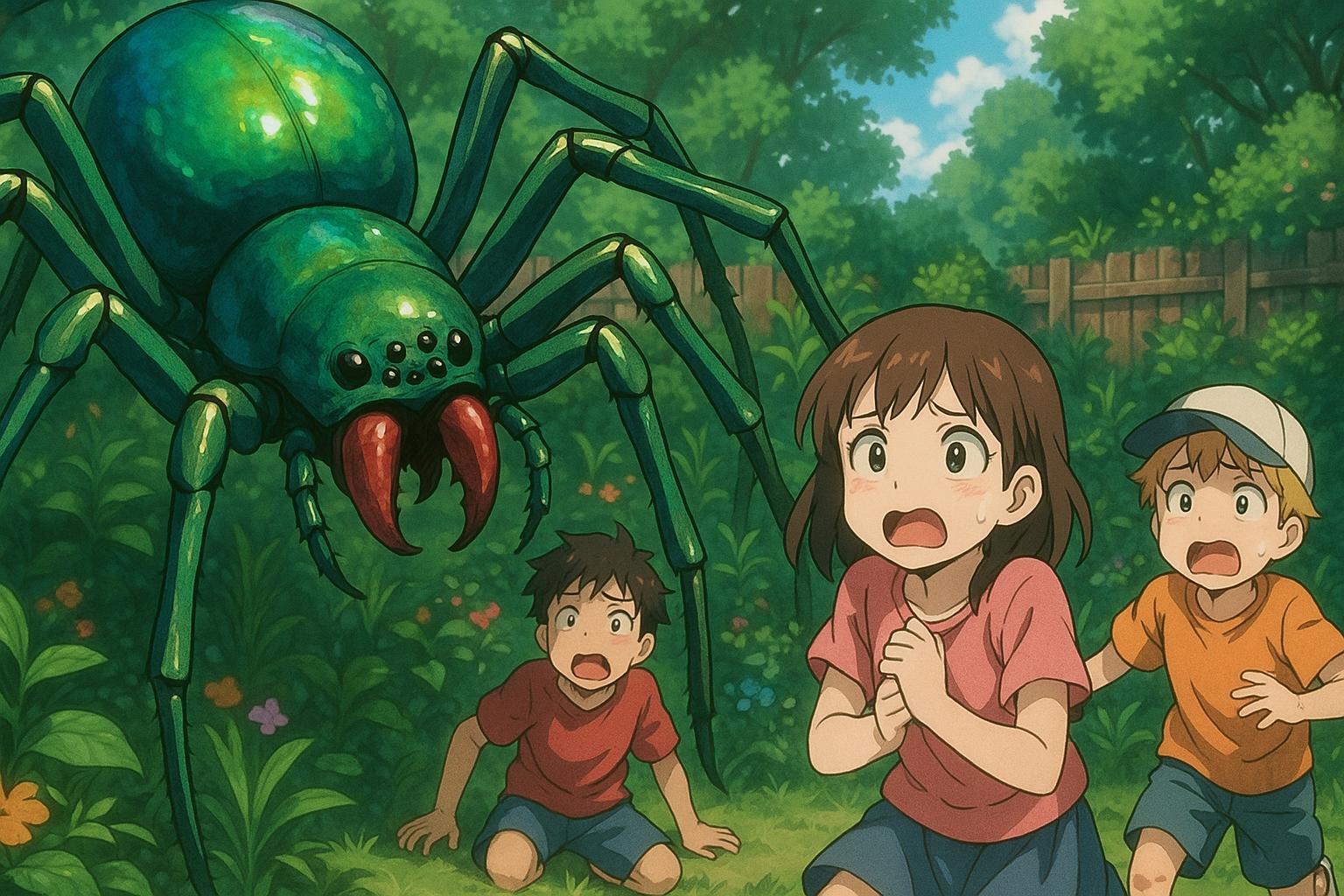Charlotte Louise, a mother from Rainham, Kent, experienced a moment of sheer panic when a large spider appeared just inches from her children while they played in the garden. The 31-year-old's immediate reaction was to scream, which sent her children fleeing in terror. “I am petrified of spiders, they make my skin crawl,” she admitted, recalling how she caught sight of the creature while adjusting a garden rug.
Upon further investigation with experts, Charlotte learned that the intruder was a tube web spider. While its bite is reported to be more painful than a wasp sting—causing significant discomfort—it is not considered toxic to humans, providing some solace amid the fright. Described as one of the largest spiders found in the UK, the tube web spider can measure up to 23 mm in body length, with its distinctive fanged mouthparts and iridescent green chelicerae making it particularly identifiable.
Charlotte’s encounter did not end there; a second spider made an appearance shortly after, triggering even more panic. “My mum then screeched so I flicked while screaming, looking like a crazy woman,” she recounted. This incident led to a flurry of activity as her family scrambled back into the house. The repeating encounters have left Charlotte on high alert during her trips to the garden, where even the slightest movement tends to set her on edge.
The tube web spider, noted for its smooth, cylindrical body, builds tubular retreats in crevices such as old walls, tree bark, and under stones. This specific habitat choice allows the spider to capture prey effectively. It employs a unique web structure with silk trip wires, which alert it to any movement by potential food sources. Experts underscore the spider's role in controlling insect populations, preying on common nuisances like flies and mosquitoes, thus maintaining an ecological balance.
Interestingly, while the pain from a tube web spider’s bite can last several hours or even days, it is not life-threatening. Such bites are comparable to those of bees and tend to occur when the spider feels threatened. Most encounters, as in Charlotte’s case, do not lead to serious harm.
Despite reassurances regarding the spider's non-lethal nature, Charlotte's fear remains palpable. She embodies the mix of fascination and fear that many people experience when confronted with spiders. “Every time I’m out in the garden putting the washing out, I feel myself looking around my feet constantly,” she shared, illustrating how one moment can exacerbate a longstanding phobia. The proximity of the spider to her children has injected an added level of anxiety for their safety in their own backyard, leaving her longing for a safer space to relax and enjoy the outdoors.
As urban environments continue to expand, increased encounters with wildlife are becoming more common. While the tube web spider is not typically seen as a threat, incidents like Charlotte’s have the potential to heighten fears and misconceptions surrounding these creatures. It serves as a reminder of the delicate balance humans must maintain with nature and the need to educate ourselves about the wildlife that shares our spaces.
Reference Map
- Paragraphs 1, 2, 3
- Paragraph 3
- Paragraphs 3, 4
- Paragraph 3
- Paragraphs 4, 5, 6
- Paragraphs 3, 5
- Paragraphs 4, 6
Source: Noah Wire Services
